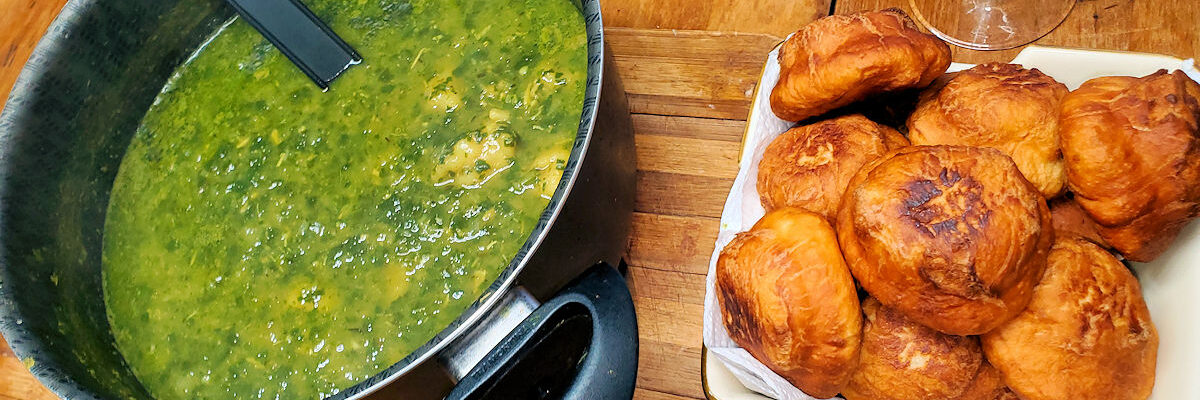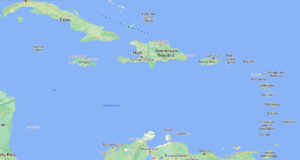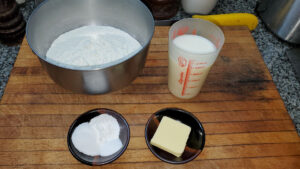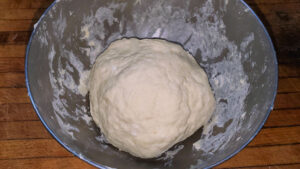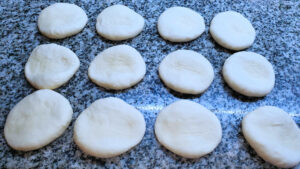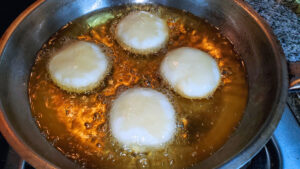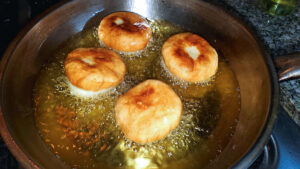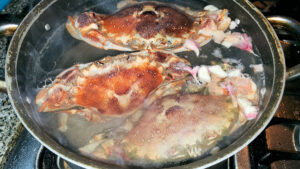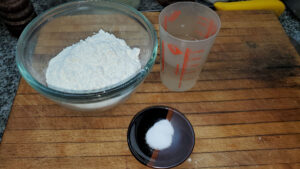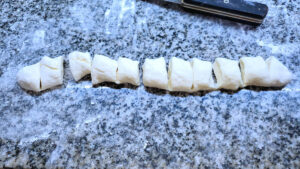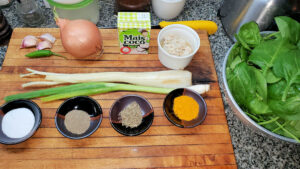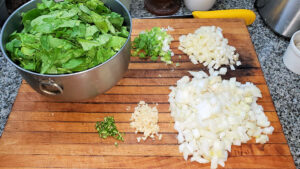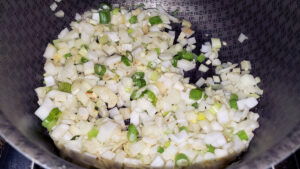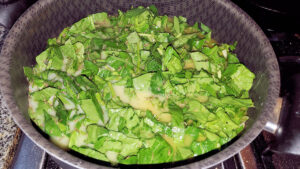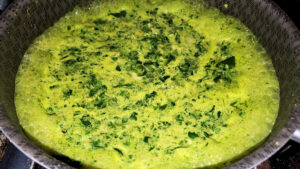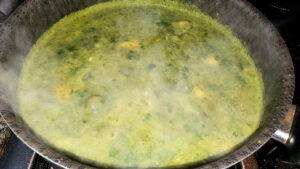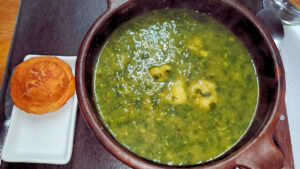Fifty! Feels like a milestone reached. Roughly, though not quite, a quarter of the way through the list of countries in the world.
We’re back in the Caribbean, and headed to two in a row countries that are often confused by probably a huge number of people who don’t happen to live in the area. We start with Dominica, officially the Commonwealth of Dominica, and not to be confused with the Dominican Republic, which we’ll head to next time.
As you can see, or at least if you click on the map and blow it up, Dominica is a small island in the Lesser Antilles, over on the east side of the map, while the Dominican Republic shares a much larger island with Haiti up on the north side. The “nature island of the Caribbean”, it’s an isle that’s still literally being formed from undersea geothermic and volcanic activity. It’s currently around 290 square miles in area – if it were a circle it’d be a mere 19 miles across. With a population of around 72,000 people, it’s less populated than many cities of similar size. The capital city is Roseau, where roughly 20% of the people live.
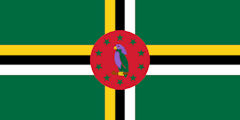 A former British colony it was originally settled in the 5th century by the Arawak people from South America. It was claimed by the French in 1632, though by agreement with locals and the British it was basically left alone officially, if not in practice, until 1778. It was turned over to the British in 1783 via treaty and remained a colony as part of the British Windward Islands until 1958, then a series of handoffs and changes of status, until finally being granted independence in 1978. Side note in the “fun with flags” world, is that it’s one of only two national flags in the world that uses the color purple, Nicaragua being the other.
A former British colony it was originally settled in the 5th century by the Arawak people from South America. It was claimed by the French in 1632, though by agreement with locals and the British it was basically left alone officially, if not in practice, until 1778. It was turned over to the British in 1783 via treaty and remained a colony as part of the British Windward Islands until 1958, then a series of handoffs and changes of status, until finally being granted independence in 1978. Side note in the “fun with flags” world, is that it’s one of only two national flags in the world that uses the color purple, Nicaragua being the other.
Roughly 87% of Dominicans (a demonym that’s part of the confusion with the D.R., whose people also are called Dominicans) are of African descent from the slave trade, and another 12% are of “mixed race”, with only 1% being noted as “European descent”. About 62% are Roman Catholic, and 12% Seventh Day Adventist. Another 20% are one or another Protestant sect, with the balance being mostly of one or another indigenous religion. English is the official language.
The cuisine is very similar to those of surrounding islands, a “creole”, or fusion of French, African, and indigenous, not surprising given the shared heritage. Seafood and chicken are popular, and also “mountain chicken”, or frog, the national dish. Starchy root vegetables and rice are common in the cuisine. For our bread, it was an easy pick, Bakes, which are a popular street snack, are, despite the name, deep-fried disks of slightly sweet dough. And while many of the islands throughout the Caribbean claim Callaloo as their own, this is the first island nation I’ve hit on in this project where it’s practically the national soup. Plus, I just wasn’t up for spending a month curing pigs’ tails in order to make a pigs’ tail and red bean soup, tasty as that sounds.
For our Bakes, we combine a couple of cups of bread flour, just shy of a cup of milk, a tablespoon of butter, and 1½ tsp each of baking powder and sugar, and ½ tsp of salt.
Warm the milk and melt the butter (I just put the butter into the milk and stuck it in the microwave for about 45 seconds. Then mix everything together to form a soft, but not sticky dough. Let it sit, covered, to relax for about half an hour.
Divide into small balls – the recipes all sort of said, “the size you want”, though descriptions are that they’re roughly a half inch thick and two inches across. I went with a dozen, and they came out a little smaller than that – if I did it again, I’d probably go eight. Flatten the balls and then let them sit for about ten minutes. They’ll tend to shrink up a little from the gluten pulling them in, so just flatten them out again a little more just before frying.
And, fry in neutral oil in a pot or skillet until golden brown and puffed. Drain on paper towel and eat while still warm! (I did these at last minute before serving lunch to a couple of friends who came over to help me eat my way through this project entry.)
Some of the recipes that I looked at for Callaloo just broke the crabs up into legs and pieces and more or less added them towards the end of the cooking of the soup, almost like a garnish. I decided to go with a recipe that picked the crabmeat clean and just added it to the soup. Unfortunately, these crabs had very little meat – three large crabs garnered me less than half a cup. I should have just bought a frozen package of crabmeat, I’d have had twice the amount for the same price. But, that’s the way it goes sometimes. The crabs were boiled for ten minutes in salted water with a couple of cloves of crushed garlic, then cooled, and I picked all the meat out of them. There’s also a popular salt pork version of Callaloo, as well as vegetarian versions that simply leave out the meat.
The soup often includes dumplings, and hey, in for a penny and all that. A cup and a half of pastry flour, three-quarters cup of water, and a quarter teaspoon of salt. Mixed together to form a firm dough.
Then, rolled out in logs and cut into pieces. Almost like making gnocchi, just skipping the next step of rolling them down a ridged board.
The main ingredient for Callaloo is the leaf of the taro, or dasheen, plant. I haven’t found those here, and spinach was generally suggested as a substitute. I’ve got almost a pound of spinach leaves here, along with a couple of cloves of garlic, a hot chili, an onion, some coconut milk, the picked crabmeat, a celery stalk, green onion, and then a tablespoon of salt, one and a half teaspoons each of black pepper and thyme, and two teaspoons of turmeric.
Chop up all the vegetables.
In a little oil, sauté all the aromatic vegetables, with half the salt, together for about five minutes.
Add the spinach, coconut milk, and all the seasonings, and top up with water to not quite cover. Bring to a simmer and cook for about ten minutes to soften everything.
Ideally, with a hand blender, coarsely puree the soup with a few pulses. Without a hand blender you’ll have to either do this carefully in a blender or food processor, or, I’d probably suggest, do it prior to the previous step, just coarsely puree it all while it’s not hot. Blending hot liquids is rarely ideal, and I’ve seen more than one glass blender crack when boiling liquid was added into it.
Add the crabmeat and the dumplings and continue to simmer for another thirty minutes. It will thicken up both as the liquid reduces and the dumplings absorb liquid and give off starch.
And that’s all there is to it. Serve up the Callaloo with a Bake or two, and enjoy! The soup is delicious. I would definitely add more crabmeat to it the next time. I’m not overly fond of these kind of dumplings. I find them dense and chewy. That may be traditional, but just not my favorite. I’d either leave them out, or add a little baking powder to the mix so that they puff up a bit and are lighter. The Bakes are really, really good. We couldn’t stop eating them. No wonder they’re one of the country’s most popular street snacks. It still bothers the linguistic tendencies in me that a fried dough puff is called a bake. From a quick scan of the internet, they’re not always fried, sometimes they’re actually baked, but the name may be because they always include baking powder.
Next time, we’re moving just 600 miles to the northwest and the Dominican Republic.
